We all face diverse challenges in life, and for some, the journey to overcome them leads down an ancient path in northern Spain. During some five weeks of walking, the pilgrimage to Santiago de Compostela offers them time for reflection in moments of solitude or during conversations with other pilgrims.
On the Camino, I learned a lot about life just by listening to the experiences of others. It often left me with a feeling of being privileged and lucky when I realized how many people struggle with physical or mental health issues. Others spoke of their financial trouble, tensions at work, addiction, or broken relationships.
Walking has a remarkable healing capacity; friends suffering from burn-outs called it their best medicine. But the Camino is more than just a very long walk; it is the modernized version of a 1200-year-old tradition with the infrastructure to handle the half-a-million annual pilgrims. I often relished the strong loyalty pilgrims feel towards each other; some experienced the power of religious or spiritual guidance. Along the route, I noticed many of us found motivation and inspiration. Others found acceptance. And some discovered a newfound strength to confront traumas they had ignored for too long.
Claus, a young Austrian shaped by years of relentless bullying at high school and work, was one such pilgrim. For him, the Camino was less about physical endurance and more about engaging with a world that, for once, seemed welcoming, unjudgemental, and kind. This pilgrimage was a new chapter in his ongoing battle for self-acceptance and resilience.
Estella
One evening, about a year ago, I got to know him better in Estella. This charming small town in northern Spain is a landmark on the Camino de Santiago, with a rich history and Romanesque architecture. The photo shows the serene view of the town just before sunset, where the warm sunlight casts a golden glow on the houses lining the river.
I captured this moment of tranquility while standing on a bridge after returning from the Iglesia de San Pedro de la Rúa. Then, a bit further on the bridge, I recognized Claus, with his red cap, blond hair, and a trim beard, who had recently joined our spontaneously formed “Camino family.” That evening, while watching the Ega River, he told me about his challenges in life.
Walking the Way of St. James, you quickly learn you’re never truly alone, even though many hope to find solitude. During the initial days, many pilgrims form their own “families,” one of the many intriguing behavior phenomena during a pilgrimage that sociologists would find fascinating to study. Imagine a real-life experiment where dozens of strangers are thrown together for a month, tasked with navigating a physical and emotional journey while facing new challenges. The Camino de Santiago comes remarkably close to such a test: a real-life walking version of a “Big Brother” kind of reality TV series.
Most of these Camino families are fluid and ever-changing. They are open groups that quickly welcome new members and don’t refer to themselves as a group or family. Others are more insular, preferring the comfort of their small, familiar circle. Soon after they form, they close to outsiders, providing a feeling of safety. In those closed groups, members strengthen their bond by copying each other’s routines and opinions while limiting interactions with others.
Despite walking the same route and covering more or less similar distances daily, many of these “families” often dissolve due to differing paces. Some pilgrims linger in larger cities, others push themselves to walk further, and some need time to heal from the inevitable blisters and injuries.
On my second Camino, my initial family was short-lived. It formed during the first days after leaving Saint-Jean-Pied-de-Port in the French Pyrenees and fell apart after about ten days when we reached Burgos. I occasionally stayed in touch with some of them during the following weeks. Our group of about eight pilgrims was diverse in age, nationality, and background. We stayed connected via WhatsApp, walked at our own pace, and despite arriving at different times, we always gathered each afternoon in a cafe in the next town to share our stories.
Claus, the Austrian pilgrim I coincidentally met again this evening on the bridge in Estella, had been one of the last to join our group. From the first moment I met him, I instantly felt he carried a heavier burden than his backpack. He was shy, insecure, and permanently nervous. The young pilgrim also missed the sense of relativity that makes it easy to enjoy humor and friendships. But I also saw kindness and a willingness to change. He could use some support and friends, so I invited him to walk with our group.
Mental scars
I learned this evening more about his life, which had been marred by bullying at school, followed by more bullying at work. Likely, his overprotective mother compounded his troubles since she seemed to influence every aspect of his life. Although Claus openly spoke about the mental scars he carried from the bullying, he didn’t seem to realize that his frequent references to his mother indicated an unusual maternal dependence for a 25-year-old.
I vividly remember one of the first evenings after he joined us. We walked into a village, searching for a place to eat. The restaurants were packed, but we settled into a cozy corner of a small alley with wooden tables. As we started to order drinks and tapas, the young Austrian looked visibly distressed. He confessed he couldn’t eat there because of a promise to his mother to dine only in proper restaurants; our open-air tables didn’t fit that definition. Despite our reassurances, the thought of breaking his promise panicked him, and he returned to his hotel.
Claus had booked all his stays in advance, unlike anyone else in our group. By picking the most luxurious hotel in each town, he had limited his Camino experience by stripping away the flexibility and spontaneity integral to the journey. By consistently choosing the higher end of accommodation, he missed the opportunity to bond in the evenings with other hikers of his generation who mainly stayed in dorms in hostels. After a few days, I knew him well enough not to be surprised when he explained to me in Estella, with his eyes fixed on the view from the bridge: “My mother helped me to prepare the Camino, and together we booked the best hotels.”
He looked at me as if waiting for supporting words, but I couldn’t find any. Claus somehow interpreted my silence as an encouragement to continue; he suddenly opened up about his experiences, uncertainties, and fears that formed lasting invisible scars. The bullies at school had chipped away at his self-esteem, which prepared him for another victim role when starting his first job. He had to quit and found a safe working environment in his aunt’s company. Walking daily on the Camino was a confrontation with years of words spoken, and insults exchanged. He was reliving the moments and worked out the proper response to his tormentors at each incident, often many months or years after it had taken place.
I realized then how challenging it can be for some people to embrace life, and I admired him for even attempting the Camino. He chose the safest, most luxurious path but took that first tiny step away from his mother’s shadow in his mid-twenties. In our group, nobody judged or asked questions; we accepted everyone for who they were and listened where needed; we encouraged them to step out of their shadows.
A year later, I wonder how he reflects on his Camino adventure. Did he gain new insights? Did he feel a sense of freedom? Did he enjoy the camaraderie and safety of our group, where nobody bullied anyone? I hope the experience gave him more self-confidence and opened up new directions in life.
Walking your own Camino
I wonder if he managed to break free from his mother, who stood guard over his existence and whose motherly love was both a lifeline and a shackle. She saw his vulnerability in the real world and wrapped him in safety. I had carefully touched upon his dependence on her that evening on the bridge, but he had brushed it away. Breaking free was a step too far for Claus and not a priority. Changing his life required so many other transformations that a supportive foundation at home might be welcome at this stage.
The Camino is a journey walked in countless ways, often expressed as “everyone walks their own Camino.” So did Claus; he started his walk mostly in isolation from other pilgrims. But once he joined our small, loosely formed family, he dared to let his defenses down and open up about his motivation to walk.
I lost track of him when we reached Burgos, where I stayed an extra day to enjoy the city and work out the notes I had made during the first ten days or so of my walk. Soon after, I found -and lost- new families. I kept walking west, preferably alone in the early mornings but mainly in the company of others after my first coffee break. Yet, I stayed in touch with some of the friends I made in the first week, meeting them at various points along the route.
I never saw Claus again. He made it to Santiago and shared a photo with our WhatsApp group, standing in front of the cathedral with his trademark red cap on his blond hair and with a self-confident smile. I remember receiving his message while looking West over the Atlantic Ocean on the rocks near Muxia. I smiled and was happy about his successful pilgrimage. I hoped he would keep some of that self-confidence after this accomplishment.
It’s now more than a year ago, and I have met many people I’ve already forgotten about since that moment. But I will remember him and his story about how consistent bullying had broken his self-confidence, just as I will remember his brave step to walk the Camino. In his own careful way, he made some friends and experienced a bit of adventure. Above all, he bravely opened up to others about his challenges in life and likely received support and advice that could help him in life. The Camino has the power to heal and be a life-changing moment; I hope it all worked out well for him and he can fully enjoy life.
Did you know that clicking on the ❤️ at the bottom or the top of this post will help others discover my publication? You can also share it with others. The best way to support my work and not miss anything is by subscribing to this newsletter.
There is often something extra to enjoy on Patreon:
Or perhaps you liked the article and want to support my writing by buying me a coffee?
I always love to read subscribers’ comments:
Exactly a year ago, on July 8, I posted this newsletter during my second Camino (note the Estella photo I also used for this article).
Finding Balance on the Camino
Walking the Camino is not just a physical journey; for many, it's a test of endurance, self-discovery, and the pursuit of personal growth. The pilgrims embark on this transformative adventure, breaking it down into manageable stages, each day bringing new experiences and challenges.


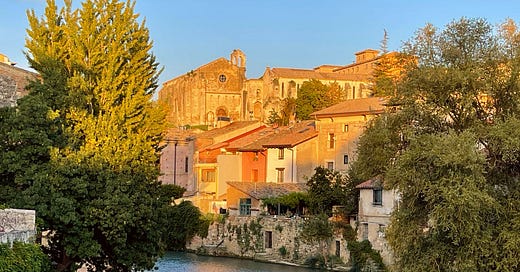



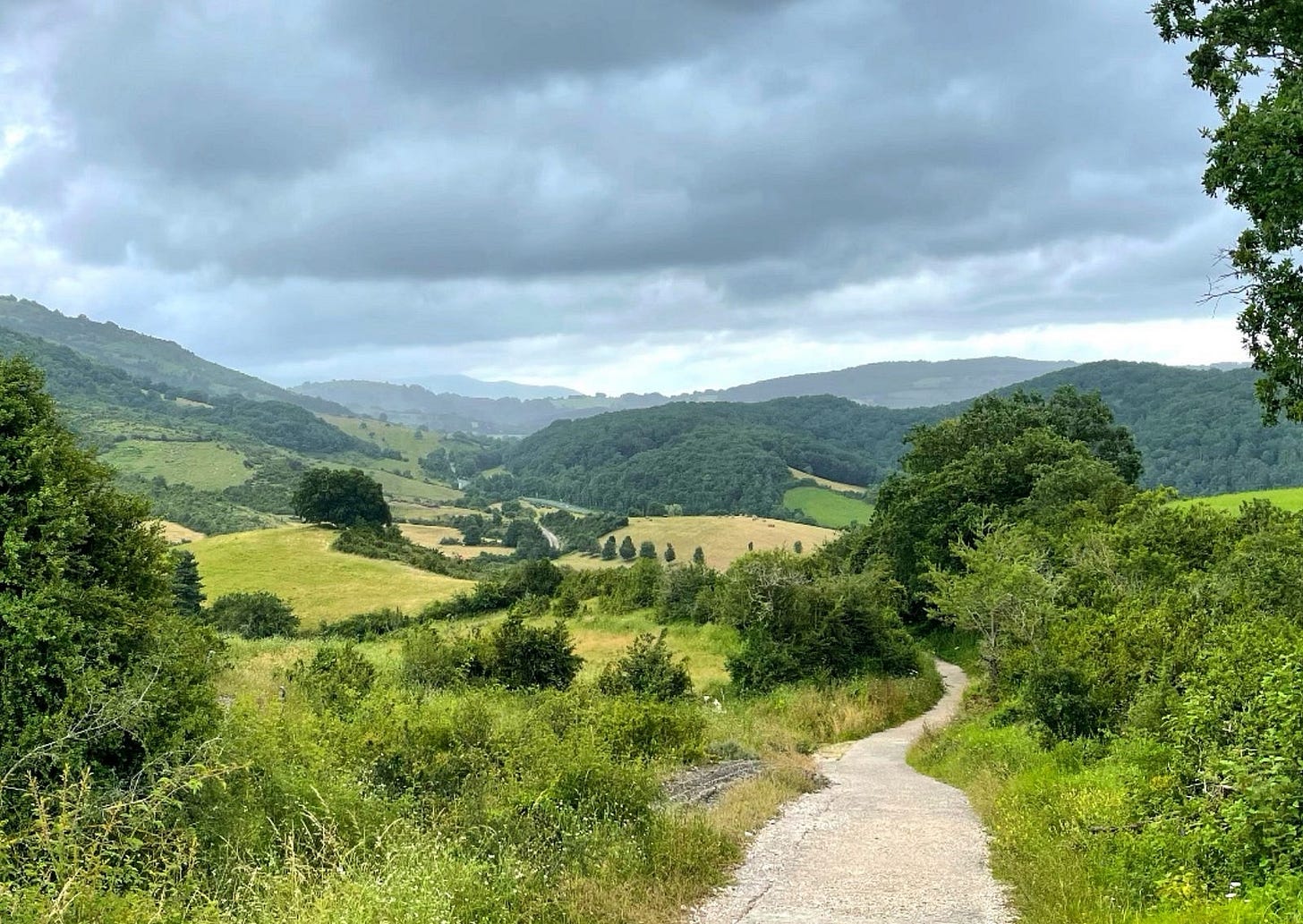
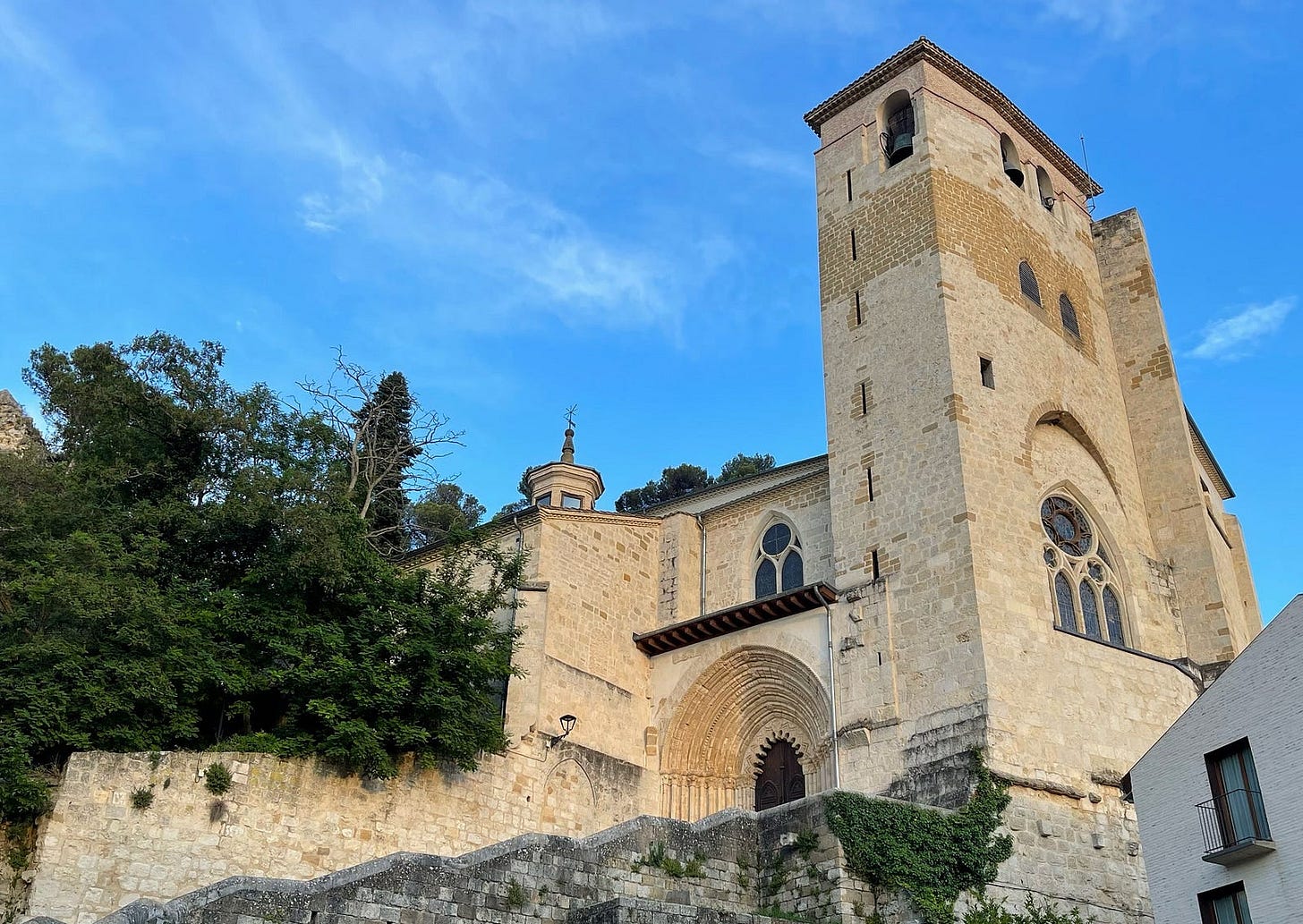
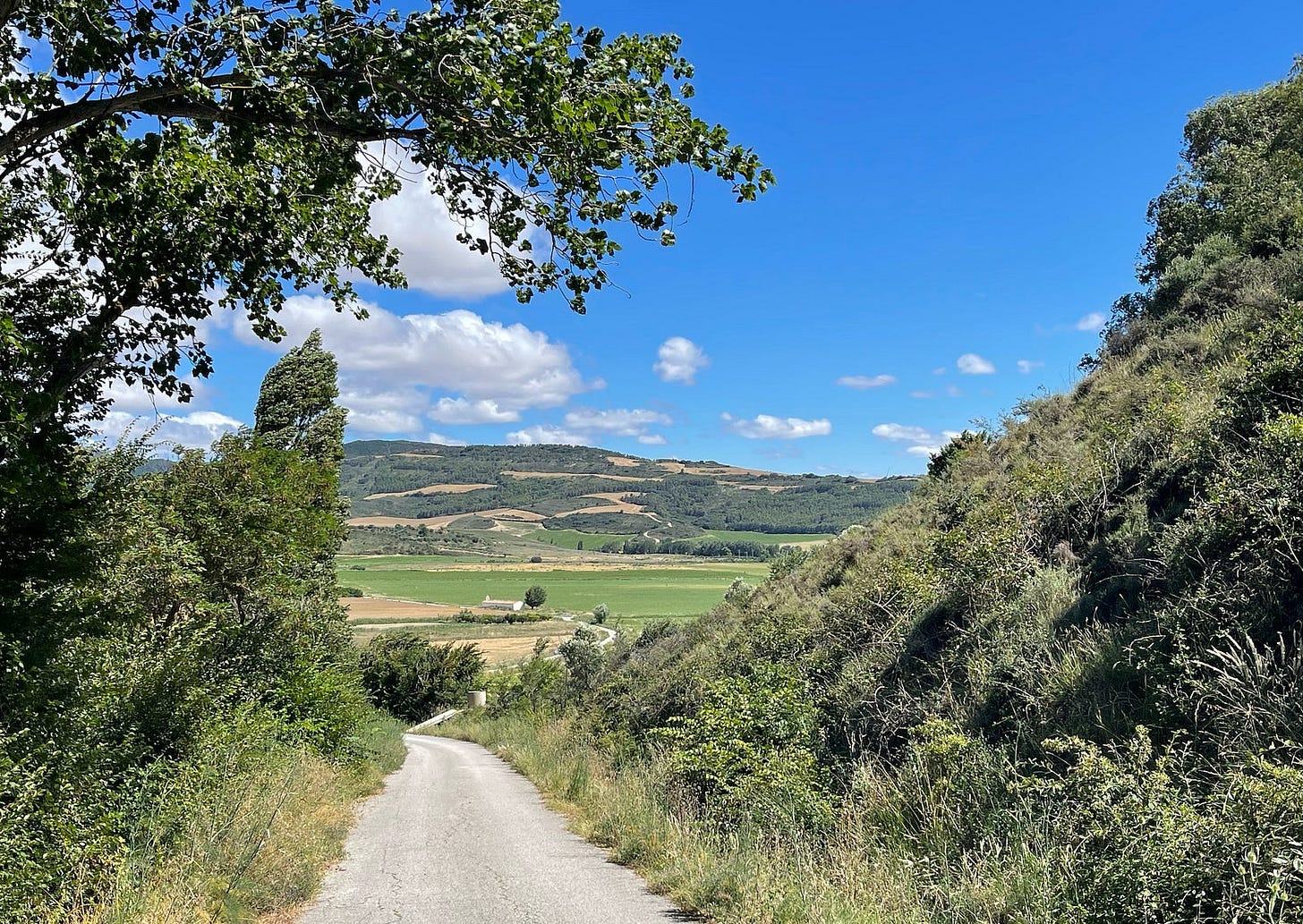
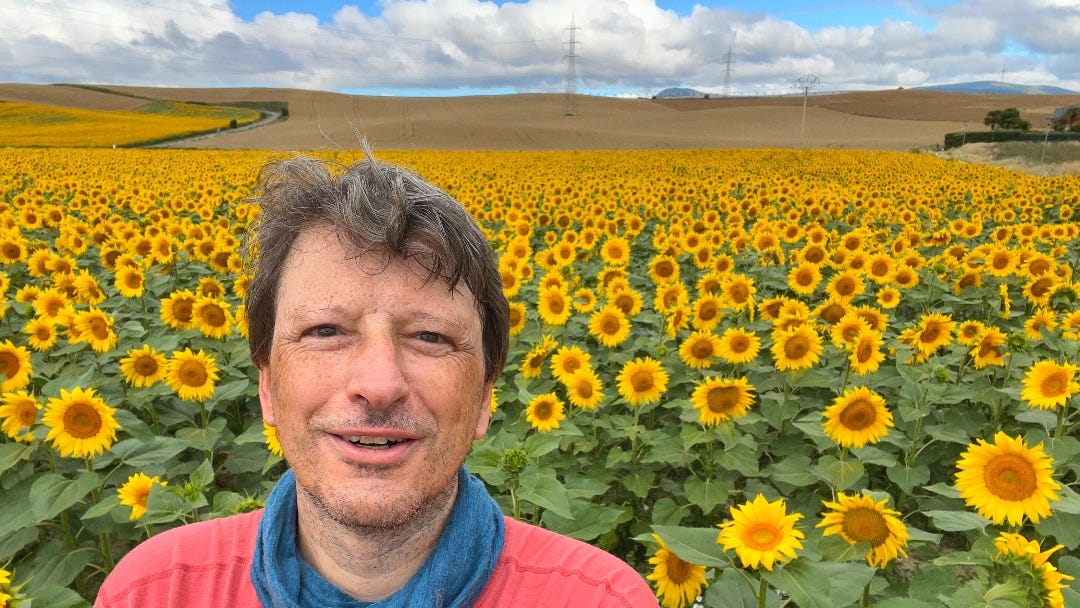
What a marvelous read!
I love your stories. Even more, I love your insightful perceptions and how beautifully you express them. Excellent!
Such a touching, profound, beautiful Camino sharing. I shall be thinking about Claus. ❤ Thank you 🌻